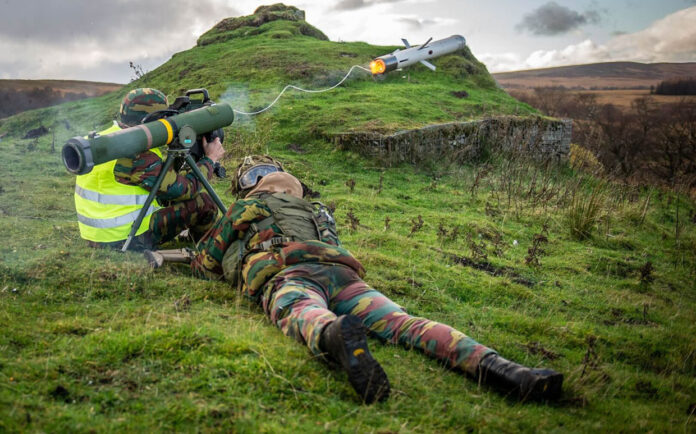U.S. Army anti-tank missile experts are enlisting the help of Lockheed Martin Corp. to evaluate the Israeli Spike lightweight anti-armor missile for potential use by infantry warfighters, and on combat vehicles, helicopters, and perhaps unmanned aerial vehicles (UAVs).
Officials of the Army Contracting Command (ACC) at Redstone announced a $138.9 million contract last month to the Lockheed Martin Missiles and Fire Control segment in Orlando, Fla. for federation, testing, and user operational assessments of the Spike Missile.
The Spike non-line-of-sight (NLOS) missile is the product of Rafael Advanced Defense Systems Ltd. in Haifa, Israel, and is a fire-and-forget anti-tank and anti-personnel missile with a tandem-charge high-explosive warhead available in man-portable, vehicle-launched, and helicopter-launched variants.
The U.S. Navy evaluated the Spike missile as early as 2012 for potential use aboard medium-sized UAVs like the MQ-9 Reaper and the Northrop Grumman MQ-8 Fire Scout unmanned helicopter to replace or augment the larger and heavier AGM-114 Hellfire missile.
The Spike’s operator tracks targets optically through the trailing fiber-optic wire or RF link while the missile is climbing to altitude after launch. Operators can manually guide the Spike NLOS missile or fire it automatically at targets as far away as 20 miles.
The weapon’s seeker and wireless datalink provide operators with real-time video imagery and control throughout the missile’s flight and lets operators alter or abort the mission while the missile is in flight.
The U.S. Army demonstrated the Spike NLOS missile aboard an AH-64 Apache attack helicopter at Yuma Proving Ground, Ariz., in 2019. Lockheed Martin is teaming with Rafael to offer the weapon system to U.S. customers.
Don’t miss out! Subscribe to our email newsletter to have all our smart stories delivered to your inbox.



